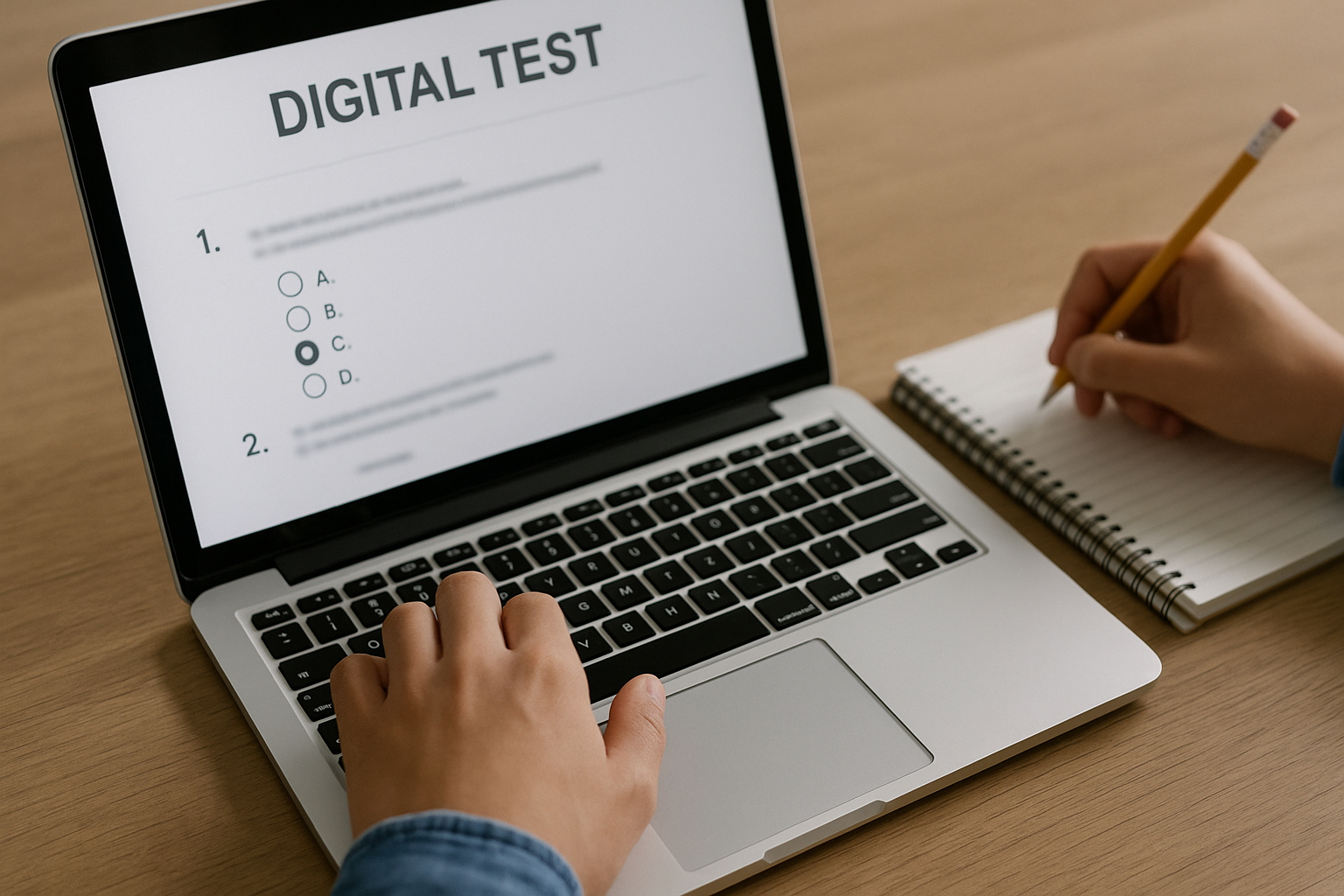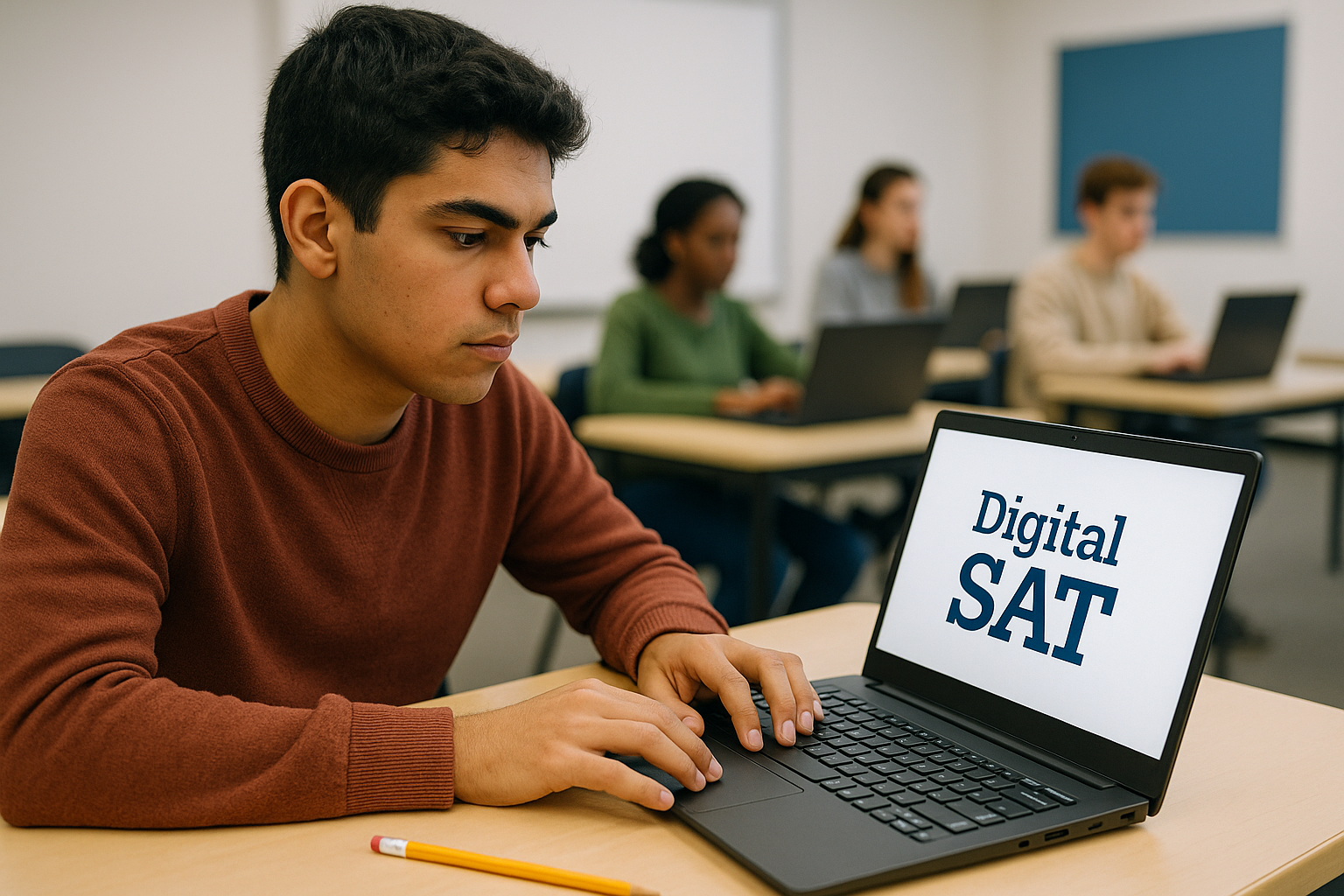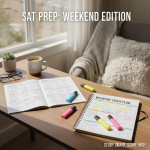The SAT’s Big Leap: Why the Test Went Digital
If you grew up picturing scantrons, pencils, and a clock that seemed to mock you as you bubbled in answers, you’re not alone. For decades the SAT lived on paper, a ritual of #2 pencils and desk-bound concentration. But the testing world has changed: classrooms, homework, and practice are increasingly digital—and the SAT evolved too. The Digital SAT isn’t simply the paper test uploaded to a screen. It’s a reimagined assessment designed to be shorter, more secure, and better aligned with modern learning and college readiness.
What does that mean for you, the student? In short: a faster test experience, new tools, and a few fresh strategies for preparation. Below we’ll walk through the timeline of change, the practical differences, and how to study smarter (not harder) so the shift works in your favor.
From Paper to Pixels: The Timeline at a Glance
The shift to a digital delivery didn’t happen overnight. It grew out of the accelerating use of technology in education and a desire to make testing safer, faster, and more flexible for schools and students. Over a few years the College Board designed, piloted, and rolled out the Digital SAT in phases—moving test centers, releasing apps, and updating guidance for educators and families. The result is a modern testing system that fits into how students already learn and practice.
What’s Different — and What’s Comfortingly the Same
Change can be unsettling, but the Digital SAT preserves the core mission of the exam while improving the delivery. Here’s a friendly breakdown so you know exactly what to expect.
What’s New
- Digital administration through a secure testing app on laptops or approved devices, rather than paper booklets.
- Shorter overall test time, broken into shorter modules that reduce fatigue and let students focus in bursts.
- Built-in digital tools: zoom, a simple calculator for math portions when allowed, and an on-screen question review tool.
- A testing environment designed for security, with adaptive and modular forms that make widespread cheating harder.
- Faster score delivery in many cases, and integration with college planning tools where available.
What Stayed the Same (and Why It Matters)
- The purpose: the SAT still evaluates reading, writing, and math skills that colleges use to understand academic readiness.
- Scoring approach: while delivery changed, score interpretation remains grounded in familiar ranges and college reporting practices.
- The value of practice: real, focused practice remains the single best predictor of improved performance.
What the Test Day Experience Feels Like Now
If you can imagine an exam where you set up your device, log into a secure testing app, and then move through focused sections with a digital pause between modules—then you’ve got the basic flow. Test day feels more like the digital routines you already use in class. There’s an initial setup, an identification check, and a short orientation inside the app so you’re comfortable with tools like highlighting or the on-screen calculator.
How the Shorter Modules Help
Instead of six or seven long sections on paper, the Digital SAT splits content into shorter modules. That matters for two reasons: first, it reduces the cognitive strain that comes with long continuous testing; second, it creates natural checkpoints for proctors to maintain test security without disrupting concentration. Students often report that shorter modules feel less daunting—especially during the reading portion, where attention and stamina can make a big difference.
Practical Differences That Change How You Prepare
Shifting to a digital format changes test-taking habits. You’ll still need content knowledge, of course, but your strategies should reflect the new interface and timing.
Key Preparation Adjustments
- Train on a screen: Don’t only practice on paper. Spend time taking full-length digital SAT practice tests so your eyes, scrolling behavior, and digital annotation habits get used to the format.
- Practice with built-in tools: Learn to use the on-screen calculator, highlighter, and any navigation features. Familiarity saves time on test day.
- Break practice into modules: Mimic the shorter, focused modules during study sessions to build concentration in the same rhythm you’ll face on test day.
- Prioritize time management: Shorter modules can tempt students to rush; practice pacing so you finish every question with a calm, confident approach.
What to Do the Week Before
- Run a device check and install the test app (or confirm school-provided device settings).
- Complete one full practice test in the app to simulate the environment.
- Keep sleep and diet routines steady—digital testing magnifies the benefits of clear thinking and rest.
Preparing Effectively: A Smart Study Framework
Good prep blends content mastery, strategy, and real practice. Below is a study framework that balances those elements and is tailored for the Digital SAT.
12-Week Study Plan (Example)
This timetable is flexible—stretch it to 16 weeks or condense it to 8 depending on starting ability—but the structure helps ensure steady gains.
| Weeks | Focus | Weekly Routine |
|---|---|---|
| 1–3 | Content baseline & fundamentals | Diagnostic test, concept review, 3 practice modules, vocabulary and math drills |
| 4–6 | Strategy and timing | Section-specific strategies, timed module practice, review errors deeply |
| 7–9 | Full digital practice & adaptation | 2 full-length digital tests, targeted practice on weak areas, sleep and stress routines |
| 10–12 | Polish & fine-tune | Final full tests, targeted drills, test-day checklist, light review |
How to Use Practice Tests Wisely
- Simulate test day: sit in a quiet spot, follow the same timing, and use the app’s tools only as allowed.
- Analyze mistakes: spend twice as long reviewing wrong answers as you did taking the test. Understand the why behind each error.
- Track trends: keep a short spreadsheet of recurring mistake types (e.g., algebra errors, reading inference questions) and target them deliberately.
Digital Tools That Help — And How to Master Them
The on-screen tools, when used well, can save time and reduce errors. But if you ignore them, they can also slow you down. The trick is to practice with the same tools you’ll meet on test day until they feel like second nature.
Quick Tips for Digital Tool Use
- Highlighter: use it to mark key lines in dense reading passages—don’t highlight entire paragraphs.
- Annotation: jot brief notes on math problems—sometimes a single mental step written down prevents silly mistakes.
- Calculator: know when the calculator helps and when mental math or algebraic rearrangement is faster.
- Navigation: flag tough questions and return; in shorter modules, efficient triage (easy vs. hard) is critical.

Accessibility and Equity: What the Digital Format Brings
One of the core reasons the SAT went digital was to expand flexibility for schools and students. Digital delivery allows broader scheduling options, in-school administrations, and faster accommodations where appropriate. For students who need extended time, the modular structure combined with school-based administration often makes accommodations easier to manage in a familiar environment.
What Students Should Know About Accommodations
- Request accommodations early—schools coordinate approvals with the testing board well before test day.
- Practice the same accommodations in the digital format so there are no surprises on test day.
- Leverage school-day testing options if they fit your schedule; these can reduce travel time and stress.
Real-World Impact: Colleges, Scores, and What Admissions Officers See
Despite format changes, colleges still receive score reports that help them assess readiness. The digital shift aims to preserve score meaning and comparability. For students, that means your Digital SAT score is treated in the same spirit as earlier paper scores—colleges care about the content behind your score and how it complements your transcript, essays, and extracurriculars.
How to Present Your Scores in Applications
- Focus on a balanced application: strong grades, compelling essays, and meaningful activities still matter most.
- Use scores to supplement your story, not to define it. A strong upward trend in grades plus a competitive Digital SAT score tells a convincing academic story.
- If a school is test-optional, decide strategically: submit scores when they strengthen your application, such as demonstrating academic readiness or qualifying you for scholarship thresholds.
Examples and Comparisons: Paper SAT vs. Digital SAT
Let’s look at a few concrete comparisons so the differences feel tangible.
| Feature | Paper SAT | Digital SAT |
|---|---|---|
| Format | Paper booklets, pencil-and-bubble sheets | Secure testing app on laptop or approved device |
| Length | Longer continuous sections | Shorter, modular sections |
| Tools | Physical calculators, paper notes, pencils | On-screen calculator, highlighting, annotation tools |
| Security | Standard proctoring; physical booklet handling | App-based protections, randomized forms, secure delivery |
| Score turnaround | Typical delays due to manual processes | Often faster, with digital workflows for reporting |
When Personalized Support Makes the Biggest Difference
Self-study and practice are powerful, but the students who make the biggest leaps often combine disciplined practice with targeted guidance. That’s where one-on-one help can accelerate progress. Personalized tutoring identifies your unique error patterns, tailors a study plan around them, and gives consistent accountability. When paired with digital practice, this approach is especially effective.
How Personalized Tutoring Helps in the Digital Era
- Tailored study plans that focus on your specific weaknesses rather than generic content lists.
- Expert tutors who show digital test techniques—like efficient use of on-screen tools and module pacing.
- AI-driven insights can supplement human tutors by highlighting recurring mistakes and suggesting practice priorities.
If you’re exploring options, Sparkl’s personalized tutoring combines 1-on-1 guidance, tailored study plans, and expert tutors who understand the Digital SAT’s rhythms. That combination helps students translate practice into consistent score improvements while keeping study time efficient and meaningful.
Common Student Questions — Answered
Will my score mean the same as before?
Yes. The Digital SAT is designed so scores remain comparable and meaningful to colleges. The goal was to maintain continuity while improving the delivery and fairness of the testing experience.
Do I need to buy new materials?
You’ll want digital practice tests and resources that mirror the testing app. Physical prep books are still useful for content review, but prioritize at least several full-length digital practice tests so you’re comfortable on-screen.
Should I change my study timeline?
Only in the sense that you should include screen-based practice earlier. The overall study time depends on your baseline and goals, but the structure of preparation is similar: diagnose, review, practice, and polish.
Final Checklist for Test Day (Digital SAT)
- Device ready with the testing app installed and charged.
- Practice runs completed in the app, including at least one full-length test.
- Comfortable pacing plan: know how you’ll triage questions in each module.
- Test-day essentials: ID, permitted calculator (if required), snacks, and a good night’s sleep.
- Contact your school or testing center ahead of time for any special instructions or accommodations.
Looking Ahead: What This Evolution Means for Learners
The switch to digital is more than a technical update—it’s an opportunity to rethink how we prepare for important exams. The new format rewards students who practice with intention, use digital tools efficiently, and seek targeted help when needed. For many, it reduces test-day stress and speeds up the path from practice to improvement.
At the end of the day, the SAT—paper or digital—measures one piece of your story. Grades, essays, recommendations, activities, and resilience all play a role. But in an era where screens are our classrooms and tests have followed suit, mastering the Digital SAT is a practical, achievable goal with the right plan, practice, and occasionally, a little help. If structured, personalized guidance fits your needs, services like Sparkl’s personalized tutoring can provide the focused attention and tailored strategies that turn potential into measurable results.
Closing Thoughts: Embrace the Change, Own Your Prep
The jump from paper to pixels can feel like a big step—but it’s a step in the same direction you’ve already been headed: toward flexible, tech-savvy learning. Use digital practice early, structure your study around clear goals, and lean on targeted help when you need it. The Digital SAT is not a new language to learn so much as a new stage to perform on. With preparation that mirrors the format and a calm, strategic approach, you’ll walk into test day feeling ready—because you are.
Good luck, and remember: the journey to college is a marathon made of many steps. The Digital SAT is one of them—approachable, modern, and beatable with thoughtful preparation.















No Comments
Leave a comment Cancel